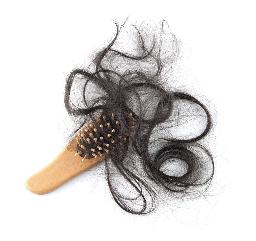1. Causes of hair loss in women

 As is the case with men, androgenetic alopecia is the main cause of hair loss in women.
As is the case with men, androgenetic alopecia is the main cause of hair loss in women.
It is a hereditary condition which affects 2/3 of women who lose their hair. It can be transmitted by the father or the mother or even by both parents. There is no general rule, hereditary transmission is complex. Moreover, this affliction can also affect siblings unequally and can also jump an entire generation.
As is the case with men, secondary circumstances can be at the origin of hair loss or can contribute to the effects of the hereditary pathology.
What is the difference with male alopecia?
First of all, women lose their hair in a diffuse way and most of their hair becomes rather thin and fine. Second of all, the front hair line is generally preserved. The donor area is often slightly balding.
2. What are the available solutions ?

 When a diagnosis of androgenic alopecia is established, two complementary treatments are possible.
When a diagnosis of androgenic alopecia is established, two complementary treatments are possible.
Minoxidil: the use of Minoxidil solution yields good results in women.. In fact, a large number of miniaturized hair will grow under the influence of Minoxidil. A Minoxidil 2% solution is preferred to a 5% solution, which does not seem to provide better results than the 2% solution. A poly vitamin treatment and minerals will also be prescribed.
Follicular transplants: a "visual wall" is created across the front area of the scalp which masks the thinning hair towards the back of the scalp. As we have already seen, the front section of the scalp is usually preserved. This is an advantage as the hair transplant can then start two to three millimetres behind the patient’s natural hairline. Women have the advantage that they can easily grow their hair and wear it long. Moreover, they can cover the zone at the back of their hair by combing their hair in different ways.
It is also possible to graft on demand where balding is most visible. Women don't go bald in the same way as men. The approach is therefore quite pragmatic, with no fear of grafting asymmetrical areas.
In the case of all other related causes, the treatment will often consist of correcting any hormonal dysfunctions, the use of Nizoral and sometimes corticoids.
3. Hair transplant as a surgical treatment for hair loss in women

 Though little known, hair transplant is often an excellent solution to solve hair loss in women. The theoretical principle is quite simple. Micro grafts consist of hair that is transferred from the back of the scalp to the front where hair is genetically different.
Though little known, hair transplant is often an excellent solution to solve hair loss in women. The theoretical principle is quite simple. Micro grafts consist of hair that is transferred from the back of the scalp to the front where hair is genetically different.
By women, two situations can be distinguished. Most of the time, the donor area is rich, unaffected by hair loss. Sometimes, hair loss affects the whole scalp. In this case, it is important to discuss the utility of a hair transplant.
The procedure lasts a few hours, under local anaesthesia and it is almost painless. No bandages are required, and you can resume your social life within days after surgery. All these advantages make micro grafts an advanced technique.